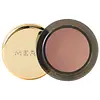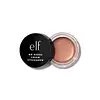What's inside
What's inside
 Key Ingredients
Key Ingredients

 Benefits
Benefits

 Concerns
Concerns

 Ingredients Side-by-side
Ingredients Side-by-side

Isododecane
EmollientDimethicone
EmollientTrimethylsiloxysilicate
EmollientHydrogenated Polycyclopentadiene
Synthetic Wax
AbrasiveHelianthus Annuus Seed Cera
EmollientHelianthus Annuus Seed Wax
Skin ConditioningMica
Cosmetic ColorantSilica
AbrasiveChamomilla Recutita Flower Extract
MaskingCalendula Officinalis Flower Extract
MaskingHelianthus Annuus Seed Oil
EmollientCaprylic/Capric Triglyceride
MaskingDisteardimonium Hectorite
StabilisingSh-Polypeptide-123
Skin ProtectingAscorbyl Palmitate
AntioxidantTocopherol
AntioxidantDimethicone/Vinyl Dimethicone Crosspolymer
Skin ConditioningPolyhydroxystearic Acid
EmulsifyingSynthetic Fluorphlogopite
Calcium Aluminum Borosilicate
Calcium Sodium Borosilicate
Magnolia Officinalis Bark Extract
AntimicrobialTin Oxide
AbrasiveCI 77891
Cosmetic ColorantCI 77491
Cosmetic ColorantCI 77492
Cosmetic ColorantCI 77499
Cosmetic ColorantCI 77742
Cosmetic ColorantCI 77007
Cosmetic ColorantCI 77510
Cosmetic ColorantCI 42090
Cosmetic ColorantCI 19140
Cosmetic ColorantCI 16035
Cosmetic ColorantCI 77400
Cosmetic ColorantCI 77000
Cosmetic ColorantIsododecane, Dimethicone, Trimethylsiloxysilicate, Hydrogenated Polycyclopentadiene, Synthetic Wax, Helianthus Annuus Seed Cera, Helianthus Annuus Seed Wax, Mica, Silica, Chamomilla Recutita Flower Extract, Calendula Officinalis Flower Extract, Helianthus Annuus Seed Oil, Caprylic/Capric Triglyceride, Disteardimonium Hectorite, Sh-Polypeptide-123, Ascorbyl Palmitate, Tocopherol, Dimethicone/Vinyl Dimethicone Crosspolymer, Polyhydroxystearic Acid, Synthetic Fluorphlogopite, Calcium Aluminum Borosilicate, Calcium Sodium Borosilicate, Magnolia Officinalis Bark Extract, Tin Oxide, CI 77891, CI 77491, CI 77492, CI 77499, CI 77742, CI 77007, CI 77510, CI 42090, CI 19140, CI 16035, CI 77400, CI 77000
Isododecane
EmollientTrimethylsiloxysilicate
EmollientKaolin
AbrasiveSilica
AbrasiveDimethicone
EmollientPolypropylsilsesquioxane
Jojoba Esters
EmollientDisteardimonium Hectorite
StabilisingDiethylhexyl Syringylidenemalonate
Skin ProtectingPhenoxyethanol
PreservativeSilica Dimethyl Silylate
EmollientPropylene Carbonate
SolventCaprylyl Glycol
EmollientCaprylic/Capric Triglyceride
MaskingTocopheryl Acetate
AntioxidantMangifera Indica Seed Butter
Skin ConditioningButyrospermum Parkii Butter
Skin ConditioningTocopherol
AntioxidantCI 77891
Cosmetic ColorantCI 77492
Cosmetic ColorantCI 16035
Cosmetic ColorantCI 77491
Cosmetic ColorantIsododecane, Trimethylsiloxysilicate, Kaolin, Silica, Dimethicone, Polypropylsilsesquioxane, Jojoba Esters, Disteardimonium Hectorite, Diethylhexyl Syringylidenemalonate, Phenoxyethanol, Silica Dimethyl Silylate, Propylene Carbonate, Caprylyl Glycol, Caprylic/Capric Triglyceride, Tocopheryl Acetate, Mangifera Indica Seed Butter, Butyrospermum Parkii Butter, Tocopherol, CI 77891, CI 77492, CI 16035, CI 77491
Ingredients Explained
These ingredients are found in both products.
Ingredients higher up in an ingredient list are typically present in a larger amount.
This ingredient is an emollient, solvent, and texture enhancer. It is considered a skin-softener by helping the skin prevent moisture loss.
It helps thicken a product's formula and makes it easier to spread by dissolving clumping compounds.
Caprylic Triglyceride is made by combining glycerin with coconut oil, forming a clear liquid.
While there is an assumption Caprylic Triglyceride can clog pores due to it being derived from coconut oil, there is no research supporting this.
Learn more about Caprylic/Capric TriglycerideCi 16035 is a synthetic dark-red dye. This dye is created from an acid called Allura red AC, an azo dye.
Azo dyes need to be purified thoroughly before use. This makes them more stable and longer lasting.
This dye is commonly used in foods, approved by both the FDA and EFSA.
Learn more about CI 16035Ci 77491 is also hydrated iron III oxide. It's sole purpose is to give a red/pink hue to products.
Iron III oxides are classified as inorganic chemicals for coloring.
Synthetically created Ci 77491 is considered safer than those naturally found. This is because the synthetically created version may contain less impurities. Iron oxides are generally non-toxic and non-allergenic.
Learn more about CI 77491Ci 77492 is also hydrated iron III oxide. It's sole purpose is to give a yellow hue to products.
Iron III oxides are classified as inorganic chemicals for coloring.
Synthetically created Ci 77492 is considered safer than those naturally found. This is because the synthetically created version may contain less impurities. Iron oxides are generally non-toxic and non-allergenic.
Learn more about CI 77492Ci 77891 is a white pigment from Titanium dioxide. It is naturally found in minerals such as rutile and ilmenite.
It's main function is to add a white color to cosmetics. It can also be mixed with other colors to create different shades.
Ci 77891 is commonly found in sunscreens due to its ability to block UV rays.
Learn more about CI 77891Dimethicone is a type of synthetic silicone created from natural materials such as quartz.
What it does:
Dimethicone comes in different viscosities:
Depending on the viscosity, dimethicone has different properties.
Ingredients lists don't always show which type is used, so we recommend reaching out to the brand if you have questions about the viscosity.
This ingredient is unlikely to cause irritation because it does not get absorbed into skin. However, people with silicone allergies should be careful about using this ingredient.
Note: Dimethicone may contribute to pilling. This is because it is not oil or water soluble, so pilling may occur when layered with products. When mixed with heavy oils in a formula, the outcome is also quite greasy.
Learn more about DimethiconeDisteardimonium Hectorite comes from the clay mineral named hectorite. It is used to add thickness to a product.
It can also help stabilize a product by helping to disperse other ingredients.
Hectorite is a rare, white clay mineral.
Learn more about Disteardimonium HectoriteIsododecane is a fragrance, emollient, and solvent.
As an emollient, it helps your skin stay soft and hydrated. Emollients help trap moisture into your skin.
Isododecane's role as a solvent makes it a great texture enhancer. It spreads smoothly on skin and does not leave a sticky feeling behind. Isododecane also helps prevent color transfer in makeup products.
Isododecane is not absorbed into skin.
Learn more about IsododecaneSilica, also known as silicon dioxide, is a naturally occurring mineral. It is used as a fine, spherical, and porous powder in cosmetics.
Though it has exfoliant properties, the function of silica varies depending on the product.
The unique structure of silica enhances the spreadability and adds smoothness, making it a great texture enhancer.
It is also used as an active carrier, emulsifier, and mattifier due to its ability to absorb excess oil.
In some products, tiny microneedles called spicules are made from silica or hydrolyzed sponge. When you rub them in, they lightly polish away dead skin layers and enhance the penetration of active ingredients.
Learn more about SilicaTocopherol (also known as Vitamin E) is a common antioxidant used to help protect the skin from free-radicals and strengthen the skin barrier. It's also fat soluble - this means our skin is great at absorbing it.
Vitamin E also helps keep your natural skin lipids healthy. Your lipid skin barrier naturally consists of lipids, ceramides, and fatty acids. Vitamin E offers extra protection for your skin’s lipid barrier, keeping your skin healthy and nourished.
Another benefit is a bit of UV protection. Vitamin E helps reduce the damage caused by UVB rays. (It should not replace your sunscreen). Combining it with Vitamin C can decrease sunburned cells and hyperpigmentation after UV exposure.
You might have noticed Vitamin E + C often paired together. This is because it is great at stabilizing Vitamin C. Using the two together helps increase the effectiveness of both ingredients.
There are often claims that Vitamin E can reduce/prevent scarring, but these claims haven't been confirmed by scientific research.
Learn more about TocopherolThis silicone is an emollient. Emollients create a thin film on the skin to prevent moisture from escaping.
It is not soluble in water and helps increase water-resistance in products.
According to a manufacturer, it can blend seamlessly with silicone oils, such as Cyclopentasiloxane.
Learn more about Trimethylsiloxysilicate